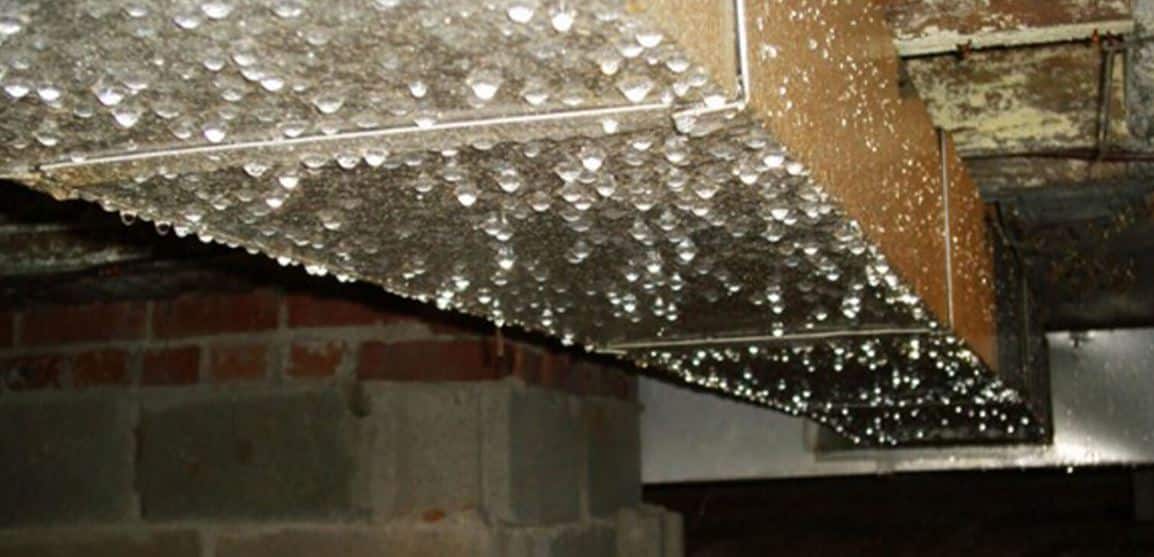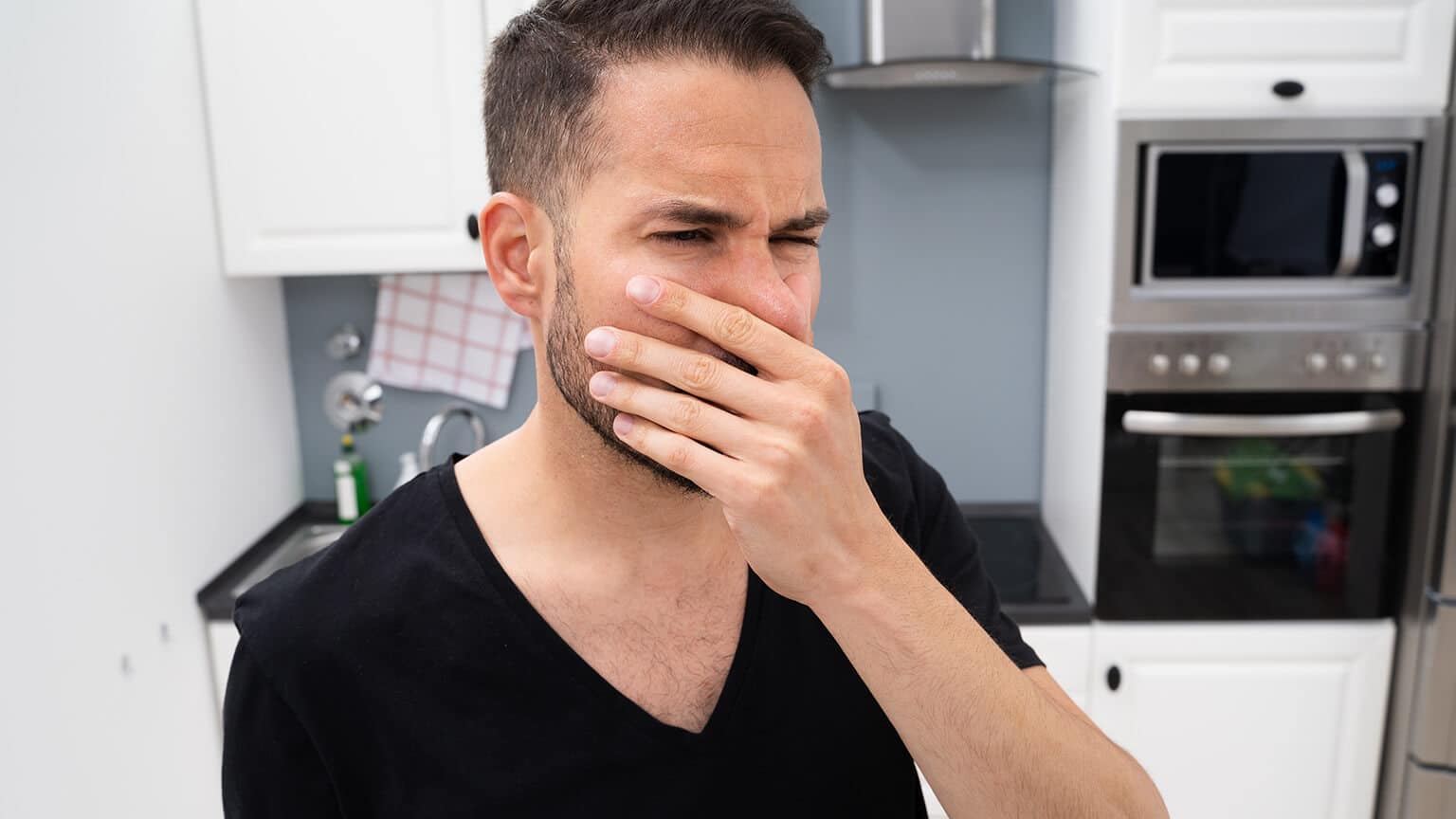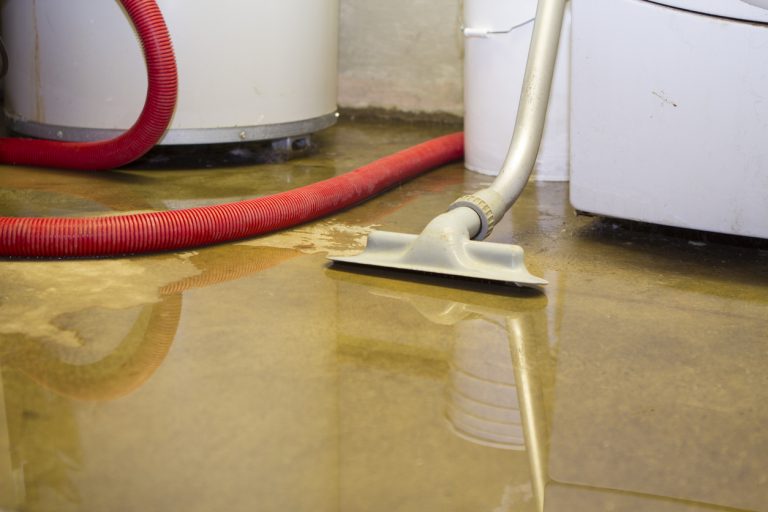Basement water problems rarely start with a flood. More often, they begin quietly—with a faint musty smell, a damp patch on the wall, or a window that’s always fogged. If left unaddressed, these subtle signs can lead to serious moisture damage and costly repairs.
At Drycrete Waterproofing, we help homeowners across Massachusetts spot the early warning signs and take action before water problems get worse. Here’s what to look for.

One of the first signs that your basement may need waterproofing is how it feels, not how it looks. If the air feels damp, sticky, or heavier than the rest of the house, moisture is present. You might notice fogged windows, sweating pipes, or that distinctive musty smell that doesn’t go away. These are early indicators that your basement is holding more moisture than it should.
When moisture lingers, mold isn’t far behind.
Mold thrives in humid environments, especially when relative humidity climbs above 60%. Even if you don’t see mold yet, elevated moisture can support microbial growth behind walls, under carpets, or inside insulation. Over time, this leads to:
Throughout the home, mold spores can circulate through HVAC systems.
Children, the elderly, and anyone with asthma or allergies may be impacted by the air.
These signal deeper problems you can’t see.
Mold growth isn’t just unsightly—it’s a health concern and a sign that water intrusion is happening consistently enough to support organic decay. Left unaddressed, mold will spread, damage materials, and make remediation far more expensive.
Even without visible leaks or pooling water, a humid basement is already telling you something’s wrong. The sooner it’s addressed, the easier it is to correct.

As moisture builds, it starts to leave visible traces. Even if your basement hasn’t flooded, these surface-level signs often point to deeper water intrusion beneath the foundation or behind the walls.
Here’s what to watch for:
These surface symptoms may seem cosmetic at first, but they’re often the first visible signs that your foundation is no longer keeping water out. If caught early, proper basement waterproofing can stop the issue before it leads to rot, mold, or structural damage.

That “basement smell” isn’t just an inconvenience—it’s a warning sign that your home’s air quality is already being compromised.
Musty odors typically mean mold or mildew is present, often caused by persistent moisture behind walls, under flooring, or in the air itself. And the problem doesn’t stay in the basement. Because of something called the stack effect, air from the lowest level of your home naturally rises. As that air moves upward, it carries the smell—and everything causing it—into the rest of the house.
Even if you rarely spend time downstairs, you’re still breathing that air. Mold spores and allergens can circulate through ductwork and HVAC systems, creating unhealthy conditions throughout the home. Over time, you may notice the odor spreading into closets, laundry rooms, and living spaces. It becomes harder to ignore—and harder to clean up.
A musty basement is more than just a nuisance. It’s a signal that moisture is affecting the health of your home. Proper waterproofing addresses the cause, not just the symptoms—eliminating damp air at its source and restoring a clean, breathable environment for your entire household.

When basement moisture is left untreated, the problems don’t stay small—they grow. What starts as a musty smell or damp corner can turn into widespread damage that affects your home’s structure, safety, and value.
Moisture weakens materials over time. You may notice cracks in the floor widening, wooden framing starting to rot, or drywall becoming soft and discolored. Mold can spread behind walls and under flooring, turning what could’ve been a simple fix into a full basement renovation. Floor joists may begin to warp from prolonged humidity, and insulation can become saturated and ineffective.
Water can also find its way in through hydrostatic pressure beneath the slab, leading to seepage, standing water, or recurring basement flooding. Without an effective drainage system or sump pump, even a moderate rainstorm can create serious water intrusion.
As the damage builds, so do the repair costs. At a certain point, you’re no longer just waterproofing—you’re rebuilding. That’s why Drycrete offers long-term solutions like interior drainage systems, sump pump installations, foundation crack repairs, and vapor barriers—all designed to stop the problem at its source and prevent future damage.
Basement moisture doesn’t go away on its own—it always gets worse with time. That’s why early detection and expert waterproofing matter.
Drycrete Waterproofing offers full-service solutions tailored to the unique challenges of Massachusetts homes. From interior drainage systems to vapor barriers and dehumidification, we stop water at its source and help you reclaim your basement.
If any of these signs sound familiar, schedule your free inspection today. We’ll get to the root of the issue and give you clear, honest options for moving forward.
5.0
Over 800 reviews